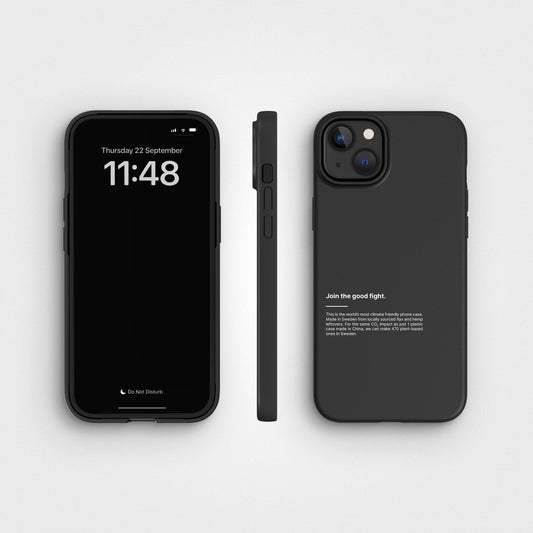Synthetic polypropylene, a remarkable member of the polyolefin family, has revolutionised various industries with its exceptional properties and adaptability. While its contributions to modern manufacturing are undeniable, it's crucial to acknowledge that this material also presents some significant challenges. As one of the most widely used thermoplastics, polypropylene offers a plethora of applications due to its unique combination of mechanical, chemical, and thermal attributes. This article delves into the multifaceted world of synthetic polypropylene, shedding light on its significance in modern industries and exploring its defining characteristics, both positive and negative. By understanding the composition and molecular structure of polypropylene, we can unravel the secrets behind its remarkable versatility and widespread use, as well as the potential drawbacks that come with it.
In the realm of modern manufacturing and production, synthetic polymers play an indispensable role. Derived from petrochemical sources, these polymers have reshaped industries and consumer products, offering a cost-effective and versatile alternative to traditional materials. Synthetic polypropylene, a prime example of these polymers, stands out for its remarkable attributes that cater to diverse applications. From packaging to automotive components, textiles to mobile cases, the influence of synthetic polypropylene is ubiquitous. To comprehend its significance fully, let's begin by delving into the foundational aspects of synthetic polypropylene.
Defining Polypropylene: A Brief Overview of Its Composition

Polypropylene is a type of thermoplastic polymer belonging to the polyolefin family. Derived from propylene monomers through a polymerization process, this synthetic material boasts a high degree of crystallinity, lending it desirable mechanical properties such as stiffness, toughness, and resistance to fatigue. However, it's important to note that these properties come at a cost, as polypropylene's resistance to degradation can also pose environmental challenges.
Molecular Structure and Polymerization Process
At the molecular level, polypropylene consists of repeating units of propylene monomers, composed of carbon and hydrogen atoms. These monomers link together through polymerization, forming long chains of polymer molecules. The arrangement of these chains influences the material's overall properties. While this structure grants polypropylene its strength and versatility, it's worth mentioning that its persistence in the environment poses concerns about long-term waste management and its potential impact on ecosystems.
The polymerization process involves catalysts, initiators, and reactors to facilitate bonding of propylene monomers, resulting in polypropylene formation. The degree of polymerization, molecular weight distribution, and tacticity contribute to the material's final properties, including crystallinity, melting point, and mechanical strength.
In the subsequent sections, we will delve into both the positive and negative characteristics of synthetic polypropylene, exploring its diverse applications across various industries, its environmental impact, and the intricate relationship between polypropylene and the mobile case industry. By examining all aspects, we can better appreciate the complexities of this widely used polymer and its implications for our world.
Key Characteristics of Synthetic Polypropylene
Mechanical Strength and Durability
A Sturdy Choice Synthetic polypropylene boasts impressive mechanical strength and durability, making it an excellent option for applications that require robust materials. Its ability to withstand substantial loads and resist deformation ensures its suitability for products that undergo repeated use or face challenging conditions.
Chemical and Thermal Resistance
Adaptable in Various Environments One of the standout features of synthetic polypropylene is its exceptional resistance to a wide range of chemicals and extreme temperatures. This attribute enables it to thrive in diverse environments, from harsh industrial settings to everyday consumer products, without succumbing to degradation or loss of integrity.
Lightweight Nature
Ideal for Diverse Applications The lightweight nature of synthetic polypropylene makes it an optimal choice for applications where weight is a critical factor. Its low density provides a balance between strength and weight, making it suitable for products that require structural integrity without unnecessary heft.
Versatility in Processing
Customizable Shapes and Forms Synthetic polypropylene's versatility extends to its processing capabilities, allowing for the creation of intricate shapes and forms through various methods such as injection moulding, extrusion, and thermoforming. This adaptability empowers designers and manufacturers to bring innovative and functional products to life.
Applications of Synthetic Polypropylene
Packaging Industry

Bags, Containers, and Beyond The packaging industry relies heavily on synthetic polypropylene for creating an array of products, including flexible packaging films, rigid containers, and bottles. Its durability, moisture resistance, and cost-effectiveness contribute to its widespread use in protecting and preserving goods during storage and transportation.
Automotive Sector
Lightweight Components and Interior Elements In the automotive sector, synthetic polypropylene finds its place in manufacturing lightweight components, such as bumpers, interior trim, and dashboard components. Its combination of strength and low weight contributes to improved fuel efficiency while maintaining safety standards.
Textile and Apparel
Non-Woven Fabrics and Sportswear The textile and apparel industry harnesses synthetic polypropylene's attributes to produce non-woven fabrics used in medical textiles, filtration, and geotextiles. Additionally, its moisture-wicking properties and lightweight nature make it a suitable choice for sportswear and activewear, enhancing comfort and performance.
Influence in the Mobile Case Industry
The rise of the mobile case industry has been significantly influenced by synthetic polypropylene. Mobile cases made from this material offer a balance between protection and style. Their lightweight design and impact resistance safeguard devices from everyday drops and impacts while allowing for sleek and customizable aesthetics.
Environmental impact of Synthetic Polypropylene
Environmental Concerns: Persistence and Non-Biodegradability
While synthetic polypropylene offers an array of benefits, its environmental impact cannot be ignored. One of the major concerns is its persistence in the environment. Synthetic polypropylene is inherently non-biodegradable, meaning it takes hundreds of years to break down naturally. This longevity in the ecosystem raises questions about its accumulation in landfills, water bodies, and natural habitats.
Impact on Landfills and Oceans: : Addressing Plastic Waste Crisis

The extensive use of synthetic polypropylene contributes to the ever-growing plastic waste crisis. In landfills, these non-degradable materials consume valuable space and release potential toxins into the soil and groundwater. Moreover, the lightweight nature of polypropylene makes it susceptible to wind and water transport, leading to its presence in oceans and waterways. This accumulation poses serious threats to marine life, as animals often mistake plastic debris for food.
Recycling and Reusability: Steps Towards Sustainability
Efforts to mitigate the environmental impact of synthetic polypropylene include recycling and reusability initiatives. While polypropylene is technically recyclable, challenges such as limited collection and sorting infrastructure, as well as contamination issues, hinder its effective recycling. Encouraging proper recycling practices and investing in advanced recycling technologies are essential steps to reduce its environmental footprint.
Ecological Impact: Microplastics and Marine Life
One of the most alarming negative aspects of synthetic polypropylene is its contribution to microplastic pollution. Over time, larger plastic items, including polypropylene products, break down into smaller particles, creating microplastics that pervade ecosystems. These tiny particles can be ingested by marine organisms, potentially entering the food chain and posing risks to human health as well.
Health Concerns:Potential Harmful Chemicals
The production and use of synthetic polypropylene raise concerns about the release of potentially harmful chemicals. During manufacturing, additives, stabilisers, and colourants may be used, some of which can leach into the environment and have adverse effects on ecosystems and human health. Proper disposal and management are crucial to minimise the release of these substances.
Disposal Challenges: Contributing to Global Plastic Pollution:
The disposal of synthetic polypropylene products poses challenges due to their non-biodegradable nature. Improper disposal practices and inadequate waste management systems contribute to global plastic pollution. Polypropylene products that end up in the environment can persist for centuries, perpetuating the plastic waste crisis and endangering natural habitats and wildlife.
Environmental Impact of Synthetic Polypropylene in the Mobile Case Industry
- Proliferation of Mobile Cases: Increased Polymer Consumption The growing popularity of mobile devices has led to a significant demand for protective cases, many of which are made from synthetic polypropylene. While these cases offer effective device protection and customization options, their widespread use contributes to increased polymer consumption. As consumers seek to safeguard their devices, the production and distribution of polypropylene-based mobile cases further strain natural resources and intensify the environmental footprint of plastics.
- Limited Recycling Options: The mobile case industry faces challenges in terms of recycling due to the complexity of case designs, varying material compositions, and inadequate recycling infrastructure. As a result, a substantial number of polypropylene-based cases end up in landfills or as litter, contributing to plastic waste streams. This limitation in recycling options exacerbates the plastic waste crisis and underscores the need for innovative approaches to design and material selection that promote circularity.
- Raising Consumer Awareness: Amidst growing environmental concerns, there is a pressing need to enhance consumer awareness regarding the environmental impact of synthetic polypropylene mobile cases. This awareness drive aims to instil a sense of responsibility in consumers when they choose protective cases. Making informed and sustainable choices in this regard can pave the way for a more positive environmental impact. This is where "agood Company" comes into the picture, offering a range of everyday products that are designed with both your well-being and the planet in mind.

In response to this imperative, the "agood Loop" program emerges as a significant initiative. It surpasses the boundaries of simply being eco-friendly; it serves as an engaging platform for individuals like you to actively partake in fostering positive change. Through the "agood Loop" program, old mobile cases are transformed into new opportunities. This means you can effortlessly transition to world’s first climate positive mobile cases at a special discounted rate. It's a collective endeavour wherein every participant contributes to making a tangible difference.
As we delve into the realm of phone cases, the importance of selecting sustainable options becomes evident. Opting for cases crafted from biodegradable materials that are naturally biodegradable and compostable, endorsing case durability, and aligning with brands that prioritise environmental consciousness collectively contribute to minimising the industry's ecological footprint. By embracing such choices, each individual becomes a vital agent in the mission to create a more sustainable and responsible future.
Conclusion
The innovative use of synthetic polypropylene in the mobile case industry has undoubtedly enhanced device protection and aesthetics. However, this progress must be approached with caution, recognizing both the benefits and drawbacks of polypropylene usage. While synthetic polypropylene serves its purpose, its environmental impact demands proactive measures to address its contribution to plastic waste and pollution.
To navigate the challenges posed by synthetic polypropylene, the mobile case industry should strive for sustainable solutions. This may involve the development of alternative materials with reduced environmental impact, improved recycling techniques, and the implementation of extended producer responsibility programs. By embracing sustainable practices, the industry can play a pivotal role in minimising its footprint and driving positive change. A Collective Effort for a Greener Future Ultimately, the quest for a greener future rests on the collective efforts of manufacturers, consumers, and policymakers. By prioritising responsible choices, advocating for eco-friendly production methods, and supporting initiatives that promote plastic waste reduction, we can forge a path toward a more sustainable mobile case industry. Through collaboration and conscious decision-making, we have the power to mitigate the negative environmental consequences of synthetic polypropylene and work towards a healthier planet.
As we conclude our exploration of synthetic polypropylene and its multifaceted impact, it is clear that while innovation propels progress, responsible stewardship of our resources remains paramount. By striking a balance between technological advancement and environmental consciousness, we can usher in a future where synthetic materials and sustainable practices coexist harmoniously.



























